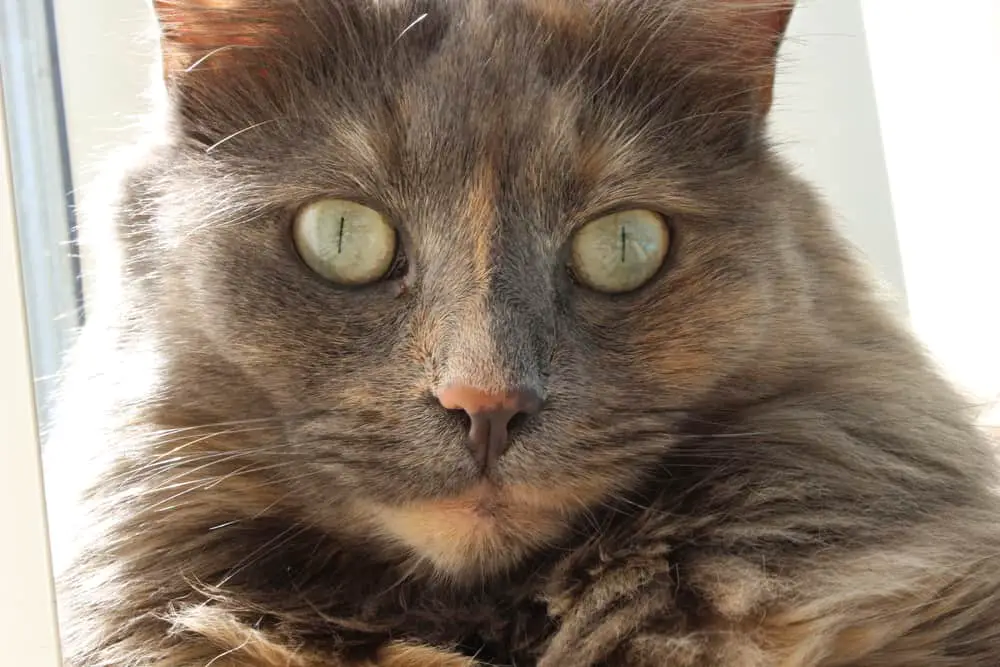Have you heard of a dilute tortoiseshell cat or a muted tortie and wondered what it is and how it is different from a normal tortoiseshell cat? You wouldn’t be alone!
A dilute tortie cat or muted tortie basically has a faded-out coat – the colors are more washed out or in pastel shades as opposed to vivid shades with a normal tortie.
For those who don’t know, let’s briefly get up to speed on torties in general. Tortoiseshell cats are not a specific breed of cat. Torties are a name given to cats with a specific coat pattern. This means you can get torties from specific breeds like Persian cats or British Shorthair but also, your average, mixed heritage alley cat can also be a tortie!
However, some pedigree cat breeds, like the Siamese, do not have a strict tortie variation as Siamese cats have to have a colorpoint coat to be Siamese! Likewise, a Bombay cat has to have an all-black coat so a tortie variant is not recognized as a true member of the breed!
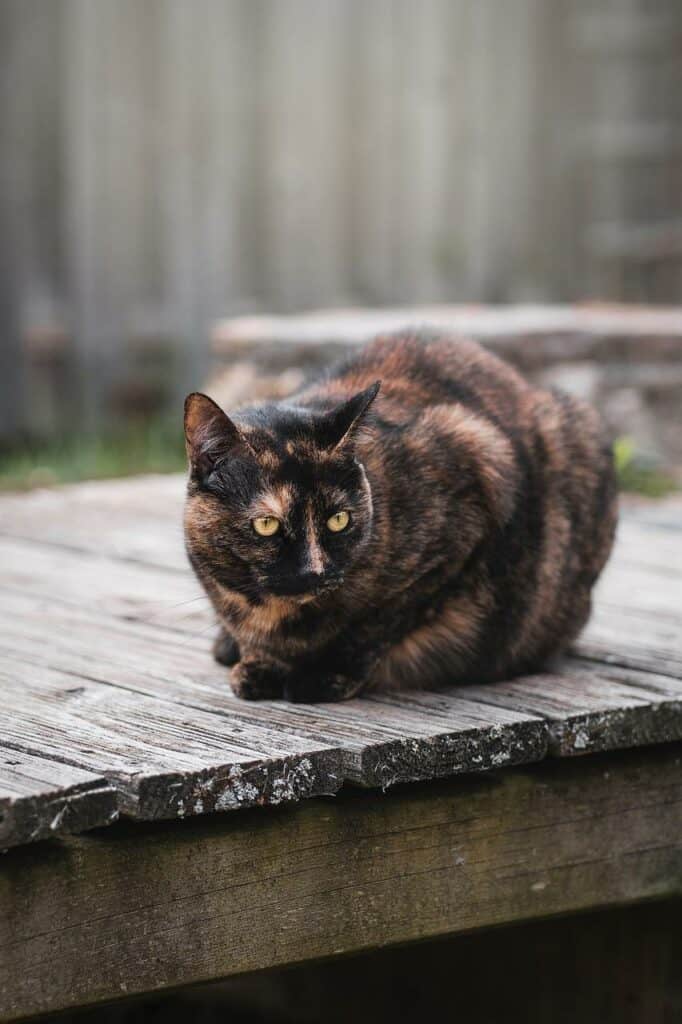
A Tortoiseshell Cats Coat
A standard tortoiseshell cat has either a long hair or short hair coat that has two specific colors and only two colors! These are black and red, with the red usually exhibiting as orange. The colors are deep and vibrant.
The fur can have a marbled pattern with patches of orange and patches of black or can have a striped mix of the two colors, flecks or ticks of orange on black or can have an appearance like two colors partially mixed on a painter’s palette.
You often find that black is the predominant color and the orange forms the stripes or ticks or smaller isolated patches but it is possible to come across torties with a full 50:50 blend.
In terms of patterns, no two torties are alike or can be mistaken for each other! This feature is common with many mixed heritage cats but is a really obvious characteristic with torties and calico patterned cats – even pedigree breed versions!
But my tortoiseshell cat has flecks of white? Are they not tortie then? Cats that have a third color in their coat are not strictly torties. If the third color, usually white, is more than 25% but less than 75% of their coat and their other two colors are black and red then they are true calico cats!
A tricolored cat with less than 25% of the coat is white and the remainder in black and red is called a “tortico” depending on where you live in the western world! Tortico’s will often have white paws and a minor white chest patch.
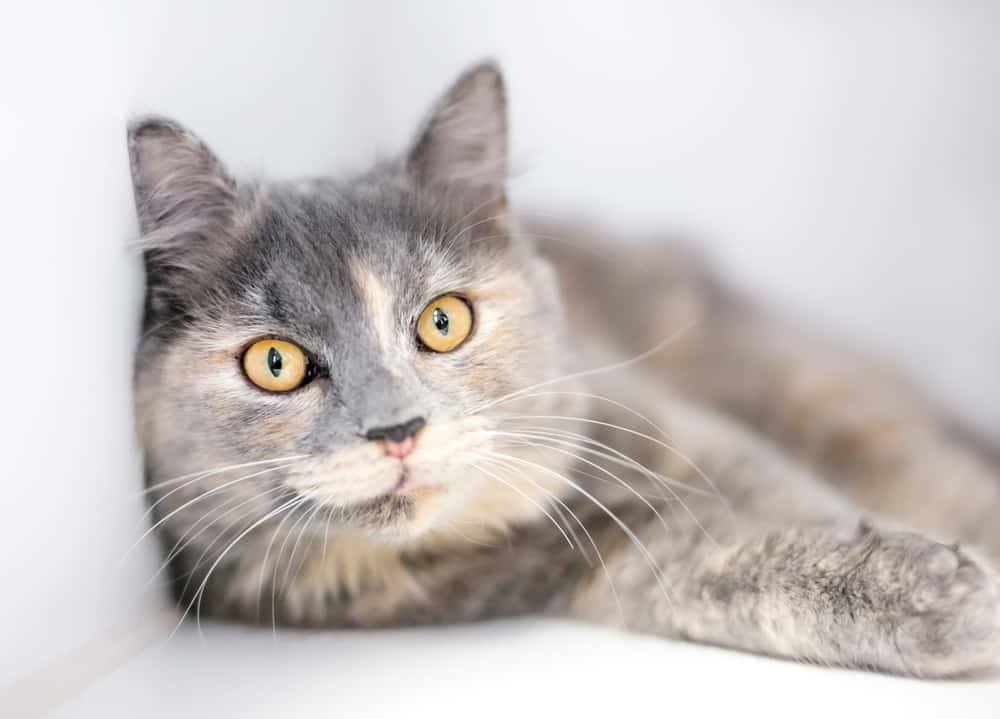
A Dilute Torties Coat
The difference between a diluted tortie or muted tortie or faded tortie is that compared to a normal tortoiseshell cat their coat colors are simply toned down.
Where a tortie would have black fur a dilute tortoiseshell cat would have washed-out grey-colored fur. The black would be faded out to grey, blue, or lavender. The reds or oranges would be washed out to a golden yellow or a distinctly faded orange and maybe even as dull as a cream or fawn brown coloration.
Dilute or muted torties simply have the color contrast turned down and the fade applies to the whole coat – it is not possible that the black is faded to grey but the red remains vibrant or vice versa. The fade is uniform!
Dilute Tortoiseshell Cats Vs Tortoiseshell Cats – How Come The Difference?
It is all down to genetics! In cats, the coat color is determined by the genetic code carried on the female chromosome (X). Females have two chromosomes, XX, and are able to carry two color codes. Males have one female (X) and one male (Y) chromosome which means they are able to carry one color code on the X chromosome only (exceptions being rare chromosomal mutations where some male cats have three chromosomes, XXY).
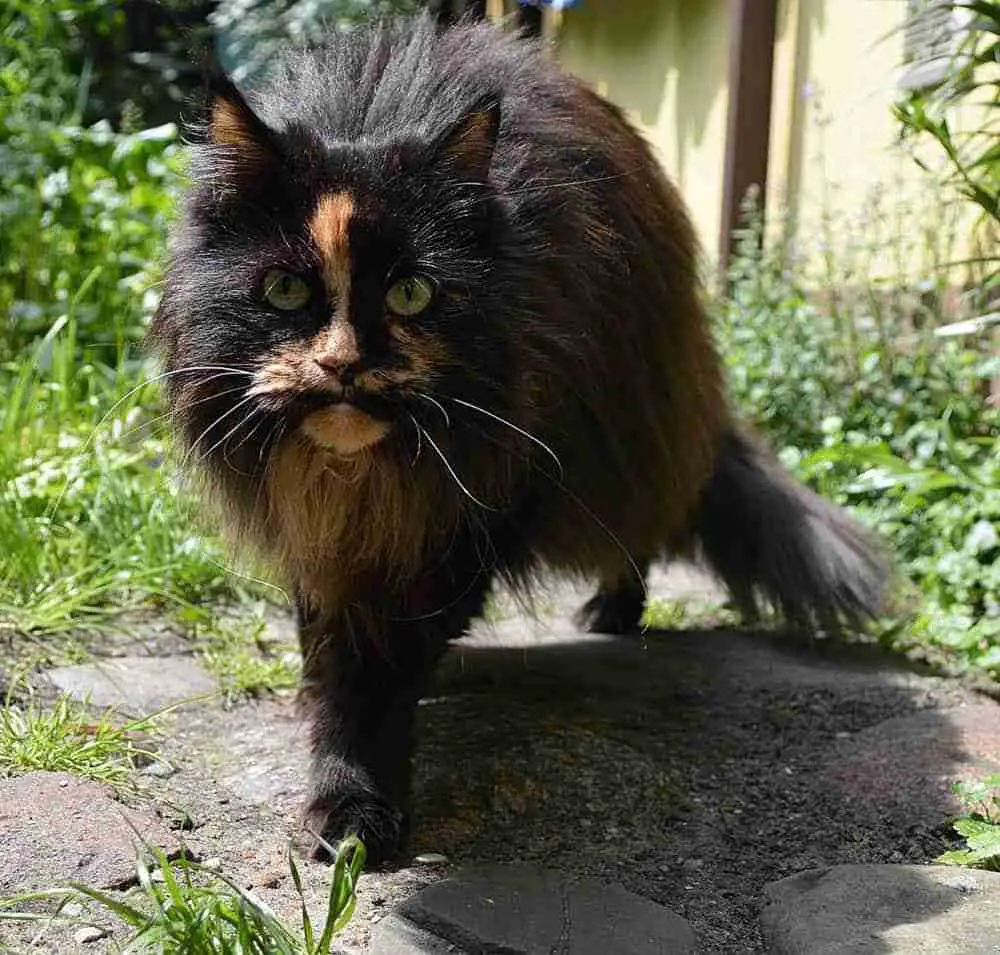
Now, if an X chromosome in a female is orange and the other X chromosome is black – two codes, there is a chance of a tortoiseshell or calico cat coat pattern being produced. Calico cats will also contain a piebald gene that creates the white areas of their coat. But if the cat has no piebald gene expressed – therefore no white – they produce a tortie coat of orange and black!
At this stage, the penny will have dropped that we are only talking females here. Male calico or torties are essentially impossible due to the chromosome situation. When it comes to males with mutated chromosomes we are looking at 1 in 3000 cats – ultra-rare, and they are generally sterile!
So what about muted torties? How does that work? Simply put these cats also inherit dilution genes from both parents. The gene is carried by a high number of cats but is recessive, meaning that both parents have to pass on the gene to the offspring to activate the gene and for the color effects to be expressed in the cat’s coat!
Ok, so why are tortie patterns of the two colors not even – why are no two torties – dilute or not – never the same pattern? This is because each skin cell will contain a single chromosome that is either red or black code. As cells are formed and distributed through the body as the embryo develops, a number of each color-coded cell is randomly created and distributed. The effect is that patches of color, streaks, flecks, and mixed areas are formed reflecting the random mix of cells distributed containing one or other of the X chromosomes and color genes. The situation is greatly more scientifically complex than that description, but if you want in-depth science check this out.
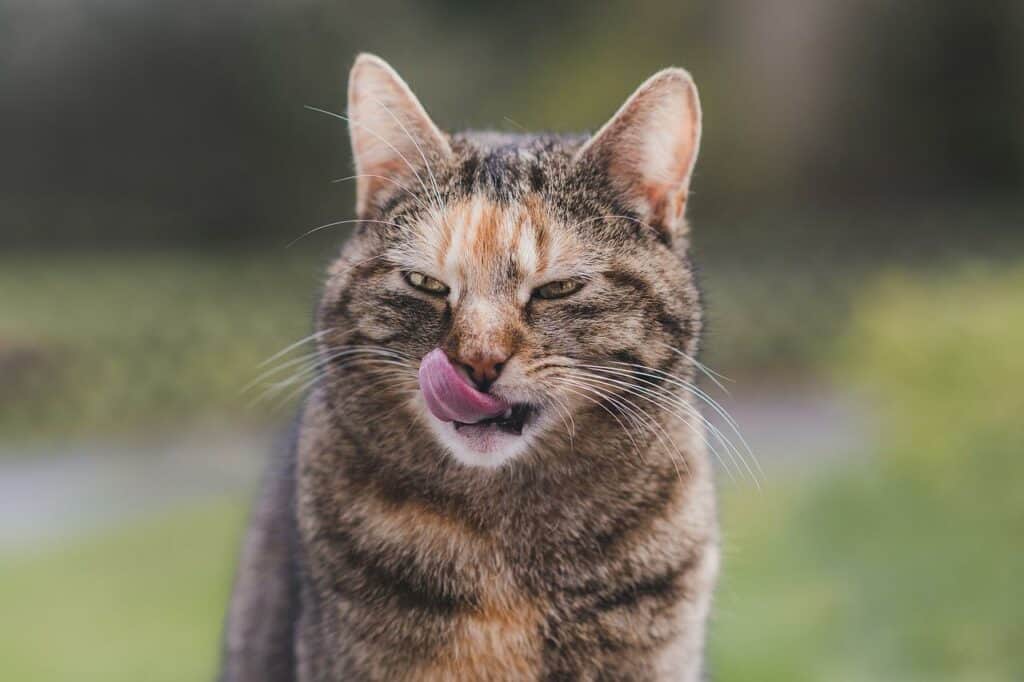
Dilute Tortoiseshell And Standard Tortie Cat Breeds
So, I can get a standard domestic shorthair or longhair cat that is a dilute tortie or full tortie but which specific cat breeds have the tortie coat pattern recognized as a standard?
According to the Governing Council of Cat Fanciers (GCCFCat.org), you can get a tortie variation in the following cat breeds :
Asian, Balinese (as a colorpoint), Birman (as a colorpoint), British Shorthair and Longhair, Burmese, Cornish Rex, Devon Rex, Exotic Shorthair, LaPerm, Maine Coon, Manx, Norwegian Forest Cat, Oriental Shorthairs and Longhairs, Persian, Ragamuffin, Ragdoll (Points, Mitted), Siamese (as a colorpoint), Siberian, Tonkinese, and the Turkish Van (van patternation only).
Do Dilute Tortoiseshell Cats Have Health Issues?
As we have discussed the genetics involved in this coat color it might raise questions as to whether either cat pattern, dilute or standard, are known for any specific genetic health problems?
The answer is that broadly speaking these coat patterns are not associated with any specific health problems.
Any health problems are likely to be breed-related if we are talking about specific breeds rather than coat related.
Additionally, if we are talking standard domestic shorthairs or a longhair tortie cat then coat pattern is not known to influence any health outcomes that most cats may suffer from over time like kidney issues, hypothyroidism or arthritis, or the such.
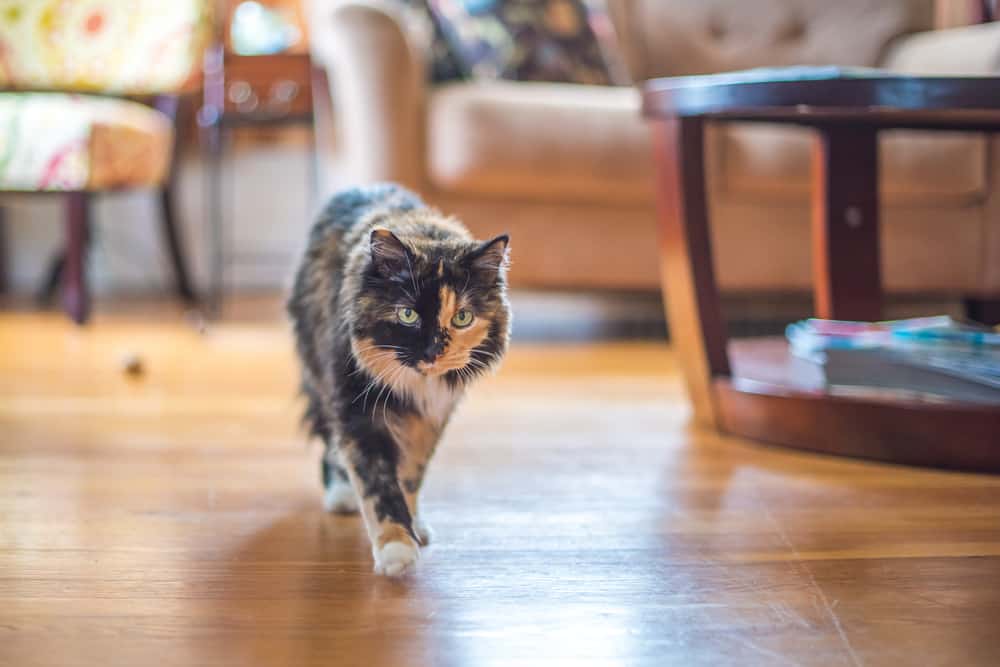
Dilute Tortoiseshell Cats Compared To Standard Tortoiseshell Cats.
In comparison, these cats are incredibly similar.
There are no personality or character differences decided by coat color or patternation.
Both types are usually female. Any of the rare males are usually born sterile.
The differences are purely down to coat coloration and depth of color and rarity. Dilute or muted torties are significantly rarer than standard torties due to the dilution gene. And then if you seek a breed-specific diluted tortie you are likely to have some trouble actually finding one given the rarity of breed-specific and dilution-specific cats.
